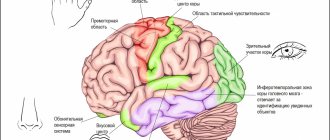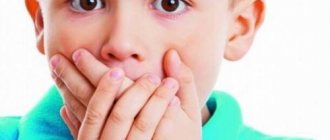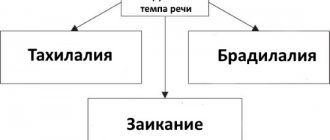Stuttering is a violation of the tempo and rhythm of speech organization, which is associated with a convulsive (contracted) state of the muscles that form speech. Stuttering is known as one of the ancient speech disorders. The essence of this condition, the mechanisms of its development, causes, symptoms and approaches to treatment differed significantly in different periods of the development of speech therapy. Different views on this problem are due to different levels of science, teachings and schools dealing with this condition. In this article we will approach this topic from the perspective of modern teachings and achievements in the field of treatment of this condition.
Stuttering is known as one of the ancient speech disorders.
Causes of stuttering
There are 2 types of causes of stuttering. The former create a predisposition, the so-called “soil” for the development of the disease. The second group of reasons are “impetuses” to development, reasons.
Predisposing reasons
A combination of one of the following unfavorable conditions and a strong irritant (stress) is enough for the development of stuttering in a child.
A lot depends on the parents. If parents have the so-called Neurotic burden, which includes infectious, neurological and other diseases that negatively affect the functions of the nervous system, then all these factors can affect the child. Infections can be transmitted, and increased irritability can negatively affect the child’s mental state.
A lot depends on the parents.
When we evaluate developmental causes, it is important to look back to the period before, during and after childbirth. It is necessary to study the presence of birth injuries, infections, asphyxia and other factors that may affect the functioning of the brain. It is equally important to study the child’s family, because it is likely that among his blood relatives there may be people who stutter.
As for the child’s body, it is necessary to pay attention to its neurogenic characteristics and constitutional predisposition. These reasons include increased vulnerability and irritability, nightmares, enuresis, and diseases of the nervous system. Of course, we should not forget that a child may go through a stage in which age-related anatomical and physiological features of the central nervous system are present.
And of course, one of the most important things is that the child should not feel disadvantaged in the family, should not face alienation and misunderstanding on the part of the parents. It is important to ensure that the baby has enough positive emotions that he receives with his parents.
Producing causes
Quite often, stuttering develops against the background of organic (physical) diseases of the brain, which lead to disturbances in the speech-motor system.
Stuttering often develops against the background of infectious and physical diseases.
Infectious processes accompanied by the development of encephalitis and meningitis can lead to depletion of the nervous system and weaken the centers responsible for the movements of the speech-motor apparatus (measles, whooping cough, meningococcal infection).
Many ENT diseases (laryngitis, tonsillitis, sinusitis) lead to changes in the timbre and intonation of the voice, which also negatively affects the formation of speech.
Mental trauma accompanied by severe fear or fright.
A significant reason is inadequate upbringing of the child. This may include increased demands from the child in learning, the formation of the phenomenon of “exemplary” behavior.
Negative, negative attitude of parents towards the child (severity, anger, strictness).
An equally important reason is the child’s unexpected shock, which can be both positive and negative (“excessive” excitement, stressful situations at school, stressful situations in the family).
Simultaneous acquisition of different languages at an early age causes stuttering, usually in one language
In the case of a child learning several languages at an early age, which leads to increased load on various centers of the brain.
Imitating people who stutter.
Classification and causes of the disorder
Stuttering can be classified according to different criteria. First of all, laloneurosis is divided into:
- clonic;
- tonic;
- mixed.
Clonic laloneurosis is based on clonic spasms of the muscles of the speech motor apparatus. They are characterized by small muscle twitches, as a result of which a person monotonously repeats the same sound or syllable or word. For example, o-k-k-k-kno.
Tonic convulsions are characterized by prolonged muscle spasms. In this case, the muscle freezes in one position and seems to become stiff. In this case, a manifestation of the disorder will be a long pause in a word or in speech: cow…..cow. The patient has great difficulty speaking.
The mixed form combines the characteristics of both previous forms.
According to localization, logoneurosis is divided into:
- articulatory – accompanied by spasms of the muscles of the face, lips, palate;
- vocal - spasm occurs during the pronunciation of vowel sounds. In this case, the patient may make indistinct sounds instead of a word or “sing” a vowel. In extreme cases, a person cannot say anything at all due to the closure of the vocal cords;
- respiratory – difficulty inhaling or exhaling prevents the patient from speaking freely, creating pauses in speech.
But the most significant classification divides the disorder into neurotic and neurosis-like.
Neurosis-like laloneurosis occurs in the presence of a specific physiological pathology. In such children, deviations in EEG indicators are observed, brain disorders, motor impairments, increased intracranial pressure, and spasmophilia are detected. Reasons for this form of stuttering:
- intrauterine, birth injuries;
- complicated pregnancy of the mother;
- infectious diseases.
Typically, neurosis-like stuttering appears at 3-4 years of age and increases gradually. His character has no situational dependence. Children begin to speak late. Nervous tics, ritual movements, and pronounced speech defects are characteristic.
Boy, 8 years old. The mother's pregnancy was difficult. During childbirth, the child experienced asphyxia. Subsequently, he was registered with a neurologist for perinatal damage to the nervous system. Received treatment. The boy was characterized by increased excitability and motor activity from birth. Stuttering appeared at the age of 3 spontaneously, for no reason, and worsened against the background of colds.
Neurotic laloneurosis occurs without physiological disorders of the nervous system. Initially, the child is characterized by normal and even early speech development. As a rule, it is possible to trace the specific cause that caused the disorder. It may be completely absent in a calm environment and worsen under the influence of stress factors. The following factors predispose to its occurrence:
- overload of the child’s nervous system due to excessive demands from parents;
- early learning of foreign languages;
- severe fear or stressful situation;
- imitating family members who stutter;
- tension in the family, quarrels, conflicts;
- incorrect parenting model: hyper- or hypo-custody;
- early speech development;
- learning costs, poor vocabulary.
Stuttering also exists in 3 stages of its development:
- mild – the defect manifests itself periodically, under the influence of a traumatic situation;
- medium – speech is impaired due to anxiety, emotional stress;
- severe – stuttering is present in the patient constantly.
Symptoms
The main symptom of stuttering is cramps (abnormal contraction of the muscles of the speech apparatus) during speech. Their duration can take from 1-2 to 12-13 seconds, and in some severe cases reach 80 seconds or more.
Be attentive to your child and help him overcome or prevent the development of stuttering.
In children with stuttering, the sequence in the pronunciation of individual words is also disrupted; children lose their train of thought due to pronounced pauses, experience emotional distress and, as a result, acquire character traits of a “defective” person.
Let us dwell in more detail on the feeling of inferiority, since this symptom largely determines the further development and course of stuttering in a child. This feeling is also called “painful fixation” of a stutterer.
There are three degrees of “painful fixation”:
- First Art. (children feel comfortable, and they do not experience embarrassment or shame due to a speech defect).
- Second Art. (children lose a sense of comfort, experience moderate embarrassment, shame due to a speech defect, and try to disguise it)..
- Third Art. (pronounced concentration on their speech impediment, experience severe embarrassment, shame. Usually this degree is noted in children of senior school age).
The effectiveness of treatment for children who stutter directly depends on the degree of “painful fixation.” The higher the fixity, the less favorable the prognosis for speech therapy work.
There are three degrees of stuttering:
- minor - stuttering appears only during excitement (expressed emotions) and during rapid speech.
- moderate - do not stutter at rest and in normal surroundings; Only when emotions are expressed does stuttering appear.
- pronounced - they stutter constantly.
Manifestations
There is no one specific symptom that can characterize the disorder. In the minds of most people, stuttering manifests itself as a rhythmic repetition of individual sounds or syllables. For example, mm-m-ma-ma. However, this is not the only symptom of the disease.
Manifestations of laoneurosis include excessive stretching of speech units, long pauses during a conversation, and swallowing of words. A person may experience hesitation in statements and difficulties in pronouncing words.
Often the face of a person who stutters is distorted by grimaces and tics. This is a kind of attempt to cope with a hated defect.
With spasms of the respiratory muscles, the patient experiences breathing problems. There is a feeling as if he is suffocating.
Inability to speak leads to mental imbalance. Such people are nervous and aggressive; children are withdrawn and avoid communication for fear of ridicule from their peers. The child refuses to go to kindergarten and does not want to play with other children. His sleep and appetite are disturbed.
Do not think that impaired speech does not entail any consequences. It's not like that at all. If you don’t deal with your baby’s problem in time, you may end up with:
- mental retardation;
- problems with learning and learning at school;
- enuresis;
- disruption of the gastrointestinal tract;
- character accentuations, neuroses;
- As you grow older, you experience difficulties in obtaining a profession and further employment.
Often, stuttering provokes the formation of phobias and defensive ritual movements. Among the possible phobic options are logophobia - fear of talking, social phobia - fear of people leading to social isolation, glossophobia - fear of public speaking.
People with logoneurosis develop a system of protective rituals for themselves. Among students, touching their forehead with their palm is common - a sign of intense thinking, and squeezing the table top with their fingers. In adults, when communicating with superiors, the following is observed:
- trampling from foot to foot;
- touching the earlobe;
- patting your hand on your thigh.
In addition, patients form rituals similar to obsessive actions: knock on wood, turn around 3 times around its axis.
Boy, 11 years old. Diagnosis: “Stuttering, severe, mixed form. Ritual movements. Logophobia." He was raised by suspicious, overprotective parents. Despite the fact that his classmates treated him well, he was overly worried about his stuttering and feared that he would become an object of ridicule.
The child is characterized by increased pedantry in relation to everything related to school and anxiety. He is constantly worried about his and his parents’ health. Against the background of stuttering, he developed obsessive rituals that turned into the whole system. So, before leaving for school, he needs to pull the button on his clothes 3 times, then knock three times and finally shift from foot to foot. If the ritual was interrupted, the child begins the sequence again. The boy claims that this relieves tension and he worries less about his defect.
In the case of stuttering, you should know that the sooner therapy is started, the higher the chances of recovery. The insidiousness of the disorder is that it is prone to recurrence.
Thus, the young man claimed that he managed to get rid of logoneurosis in 1.5 months. Rejoicing, he stopped studying, and the disorder returned after a while. Then the guy realized that the disease was not so simple and required a careful, thoughtful approach. He subsequently created a website for people with stuttering, zaikanie . com , designed to help those in need overcome this unpleasant disease.
Survey
The examination of such children should include consultation with specialists:
- speech therapist;
- neurologist;
- psychologist;
- if necessary, consult other specialists.
The main specialist involved in the treatment of stuttering in children is a speech therapist.
In the process of working with children, the speech therapist uses various textbooks, poems, fairy tales, and selects special toys.
The purpose of the examination is to determine the frequency, source of occurrence and form of speech spasms. The degree of stuttering and the patient’s speech abilities are also assessed. The second plan, if any, indicates accompanying speech defects.
At the end of the conversation with the patient, the speech therapist formulates a final conclusion.
Localization (location) of convulsions during stuttering
Articulatory
- facial (lips, lower jaw);
- lingual;
- spasms of the soft palate.
Voice
- closure (convulsively closed vocal folds cannot open in a timely manner);
- disconnecting (the glottis remains open - in this case there is complete silence or whispered speech);
- vocal, characteristic of children (drawing out vowel sounds).
Respiratory
- expiratory (convulsive exhalation);
- inspiratory (convulsive inhalation, sometimes with sobbing);
- respiratory (convulsive inhalation and exhalation, sometimes with a break in the word).
Treatment and prognosis
Today, the treatment of such children includes not only medical, but also pedagogical influence.
- Use of medications. A huge number of different groups of drugs can be used in the treatment of stuttering. Let's look at the most common of them:
- 1. Nootropics (piracetam, pantogam, pantocalcin, phenibut).
- 2. Sedatives (valerian, phenibut, glycine, persen, afobazole, adaptol, novo passit). It is worth noting that many nootropics also combine sedative effects.
- 3. Vitamins, especially B vitamins (combilipen, compligam B, larigama).
One of the treatment methods is sessions with a speech therapist.
There are a huge number of methods for overcoming stuttering in children, as well as groups of drugs that can be used in individual cases. Many of you are interested in the question: “Can we help a child on our own, at home and without running to doctors? Is it possible to completely cure stuttering in a child? There are separate techniques that allow you to improve pronunciation and so on by practicing at home, but they are also selected by a specialist. As for the forecast, there is no clear statement. It can be assumed that the younger the child, the more cheerful and positive his behavior, the fewer concomitant psychopathological disorders, the weaker the manifestations of seizures, the better the prognosis.
Comparative characteristics of various forms of stuttering
| Indicators | Neurotic | Neurosis-like | Mixed |
| Speech activity | Sharply reduced | Usually elevated | Increased until neurotic layers appear, then decreases |
| Localization of seizures | Respiratory-vocal sounds predominate | Predominant in the articulatory apparatus | In all muscle groups associated with speech |
| Speech rate | Different | Tahilalia | Tahilalia |
| Sound pronunciation | Without features | Often dyslalia, less often dysarthria | Various |
| Expressiveness of speech | Various | Speech is inexpressive, monotonous, muffled | Speech is inexpressive, monotonous, muffled |
| Psychomotor skills (including logomotor skills) | No obvious features | Clumsiness, poor handwriting, sluggish facial expressions, stiffness and monotony of movements | Various |
| Nose flaring during speech | Typically | Not always | Not always |
| Related movements | Frequent. Their character is changeable | Very frequent. Stereotypical | Constant and most often monotonous |
| Fixation on difficult sounds | Expressed | Weaker than with neurotic stuttering | More or less pronounced |
| Course of stuttering | Wave-like, the severity of stuttering depends on the severity of traumatic experiences | More or less constant, with periods of deterioration depending on the degree of fatigue, speech load, and somatic condition | Depends on the psychophysiological state, therefore wavy |
| Dyslexia, dysgraphia, dyscalculia | Rare | Frequently | Frequently |
| Purposefulness in overcoming speech disorders | Usually high, sometimes excessive | Sharply reduced | Insufficient |
| Psychotraumatic situation | Severely impairs speech | Usually has little effect | Impairs speech |
| Logophobia | Characteristic | Not typical | Joins later as neurotic layers develop |
| Increased fixation on speech | Typical | No | Occurs frequently |
| Psychomotor development | Various, sometimes accelerated | Delayed | Delayed |
| Development of self-care skills | No noticeable deviations | Delayed | Delayed |
| Left-handedness | As in the population | Often | Often |
| Speech pathology in close relatives | Rare | Often | Often |
| Timing and circumstances of the onset of stuttering | After mental trauma at any age, but usually at 3-7 years of age | During the development of speech | Neurosis-like stuttering during the period of speech formation, and neurotic layers much later (usually at 12-15 years of age) |
| Personality accentuations | Characteristic | Not typical | May occur |
| Intelligence | Doesn't suffer | May be reduced | May be reduced |
| Increased fixation on speech | Typical | No | Occurs frequently |
System of correctional work with stutterers by period
Preparatory period of speech therapy work
- Creating a gentle regime
- Preparing a child for classes
- Showing examples of correct speech
Training period of speech therapy work Developing the skills of free speech and correct behavior in different forms of speech and a variety of speech Consolidating period of speech therapy work Automation of the speech skills acquired by the child in various types of speech activity
Answers to the questions: Is it possible to cure stuttering?








